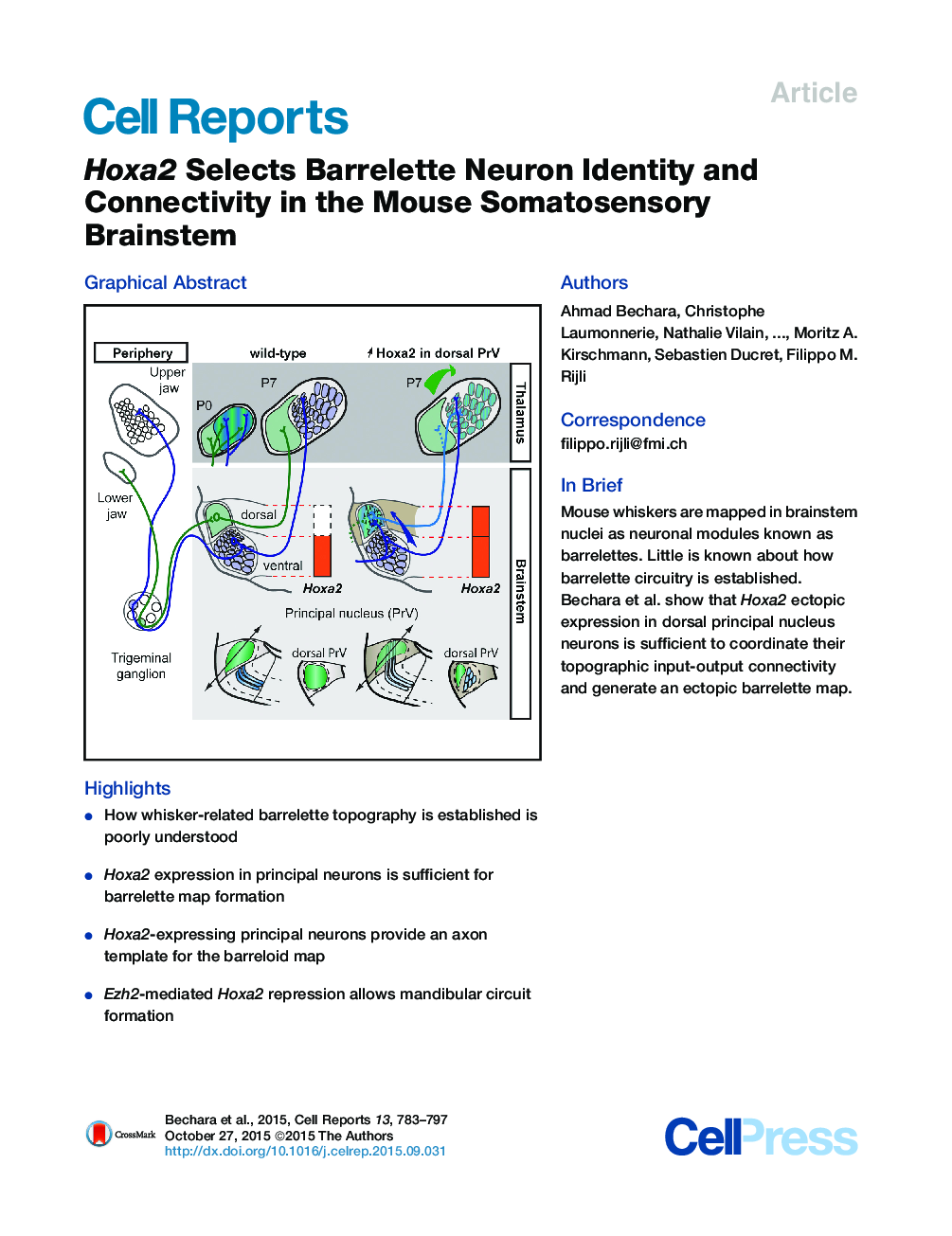| Article ID | Journal | Published Year | Pages | File Type |
|---|---|---|---|---|
| 2039398 | Cell Reports | 2015 | 15 Pages |
•How whisker-related barrelette topography is established is poorly understood•Hoxa2 expression in principal neurons is sufficient for barrelette map formation•Hoxa2-expressing principal neurons provide an axon template for the barreloid map•Ezh2-mediated Hoxa2 repression allows mandibular circuit formation
SummaryMouse whiskers are somatotopically mapped in brainstem trigeminal nuclei as neuronal modules known as barrelettes. Whisker-related afferents form barrelettes in ventral principal sensory (vPrV) nucleus, whereas mandibular input targets dorsal PrV (dPrV). How barrelette neuron identity and circuitry is established is poorly understood. We found that ectopic Hoxa2 expression in dPrV neurons is sufficient to attract whisker-related afferents, induce asymmetrical dendrite arbors, and allow ectopic barrelette map formation. Moreover, the thalamic area forming whisker-related barreloids is prenatally targeted by both vPrV and dPrV axons followed by perinatal large-scale pruning of dPrV axons and refinement of vPrV barrelette input. Ectopic Hoxa2 expression allows topographically directed targeting and refinement of dPrV axons with vPrV axons into a single whisker-related barreloid map. Thus, a single HOX transcription factor is sufficient to switch dPrV into a vPrV barrelette neuron program and coordinate input-output topographic connectivity of a dermatome-specific circuit module.
Graphical AbstractFigure optionsDownload full-size imageDownload as PowerPoint slide
